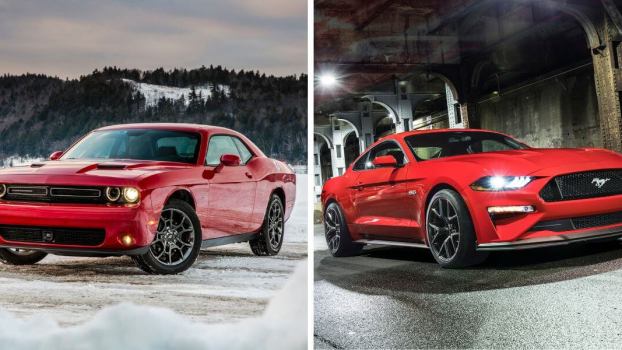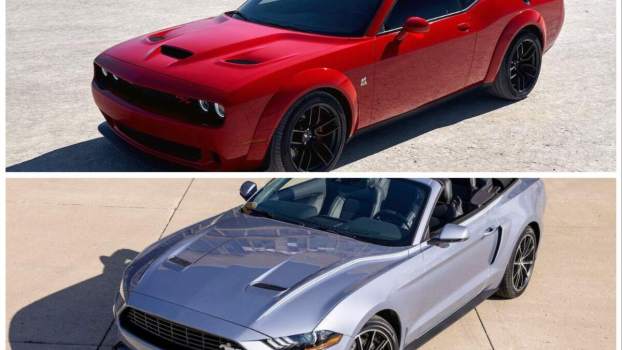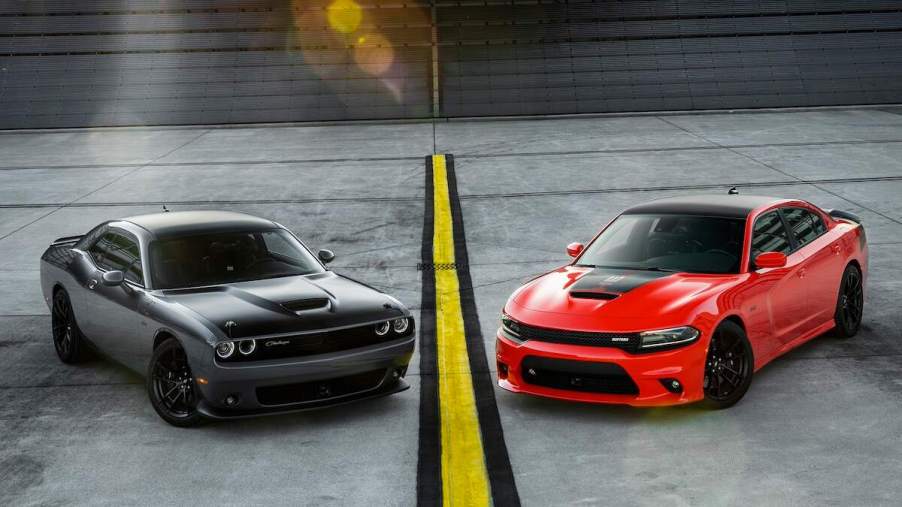
Challenger vs. Charger: Which $25,000 Used Dodge Muscle Car Is the Better Buy?
Though they share the same platform, the 2018 Dodge Charger and 2018 Dodge Challenger are noticeably different muscle cars. The Challenger is all brute, with a retro design nodding to the classic 1970 model. On the other hand, the Charger is a modern take on the original. This 2018 Dodge Challenger vs. 2018 Dodge Charger comparison will highlight their essential aspects to help you decide which used muscle car is a better fit on a $25,000 budget.
| 2018 Dodge Challenger | 2018 Dodge Charger | |
| Average Used Price | $19,500–$82,000 | $18,000–$53,200 |
| Trim levels | SXT, GT, R/T, R/T 392, SRT 392, SRT Hellcat, SRT Demon | SXT, SXT Plus, GT, GT Plus, R/T, Daytona, R/T Scat Pack, Daytona 392, SRT 392, SRT Hellcat |
| Engine Types + Sizes | 3.6L–6.2L V6 or V8 | 3.6L–6.4L V6 or V8 |
| Horsepower + Torque | 305–797 hp + 268–707 lb-ft | 292–797 hp + 260–707 lb-ft |
| Transmission + Drivetrain | 6-speed manual, 8-speed automatic + RWD | 8-speed automatic + RWD or AWD |
| 0–60 Acceleration + Top Speed | 3.4–5.1 seconds + 125–199 mph | 4.6–6.4 seconds + 124–204 mph |
| Fuel efficiency | 19/30 mpg city/hwy | 19/30 mpg city/hwy |
2018 Challenger overview
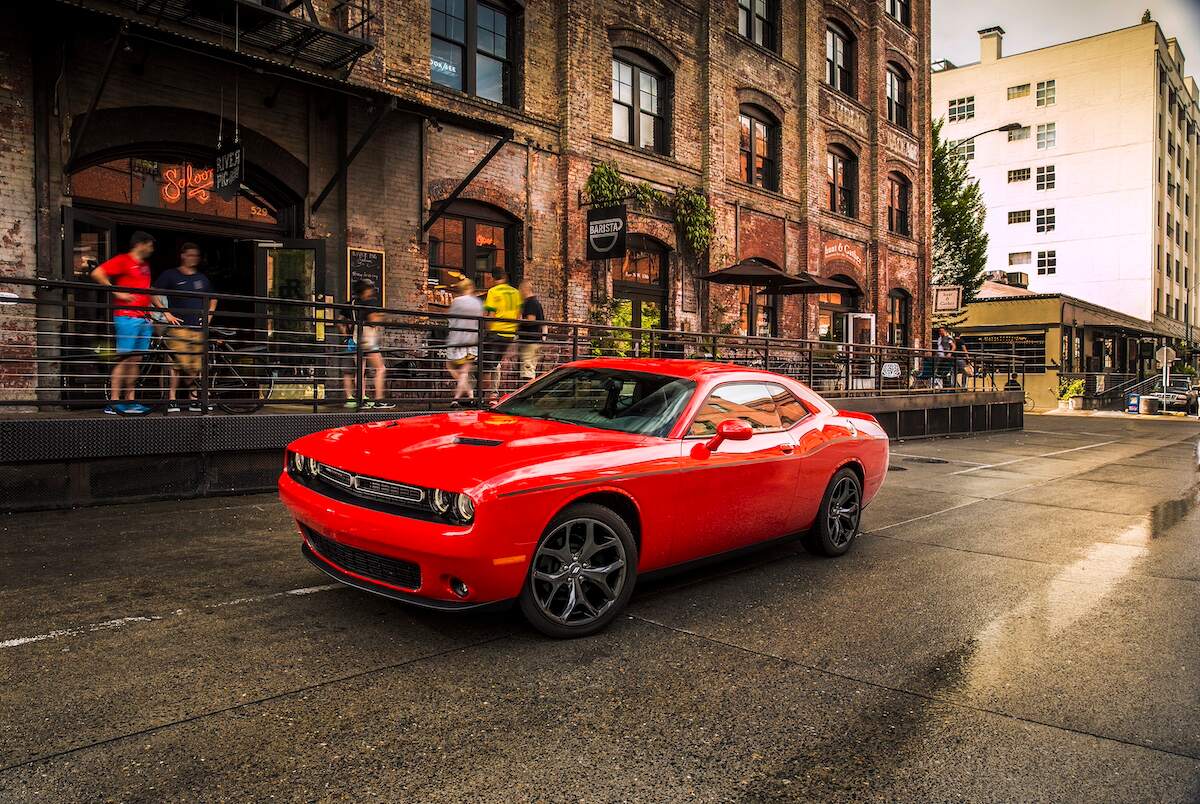
The 2018 Dodge Challenger is a five-seat, two-door coupe with seven trim levels: SXT, GT, R/T, R/T 392, SRT 392, SRT Hellcat, and SRT Demon. The SXT and GT have a V6 engine, while the others pack increasingly powerful V8s, culminating in the 840-hp Demon.
However, the most potent models will break a $25,000 budget, so search for good-condition lower-level trims. The standard Challenger engines won’t give you the same screaming performance as a Demon, but they’re still fun to drive.
Pros:
- Powerful engine options
- Sporty driving experience
- User-friendly infotainment system
- Attractive retro styling
Cons:
- Less agile than the Charger
- Unimpressive interior quality
- Cramped backseat challenging to access
2018 Charger overview
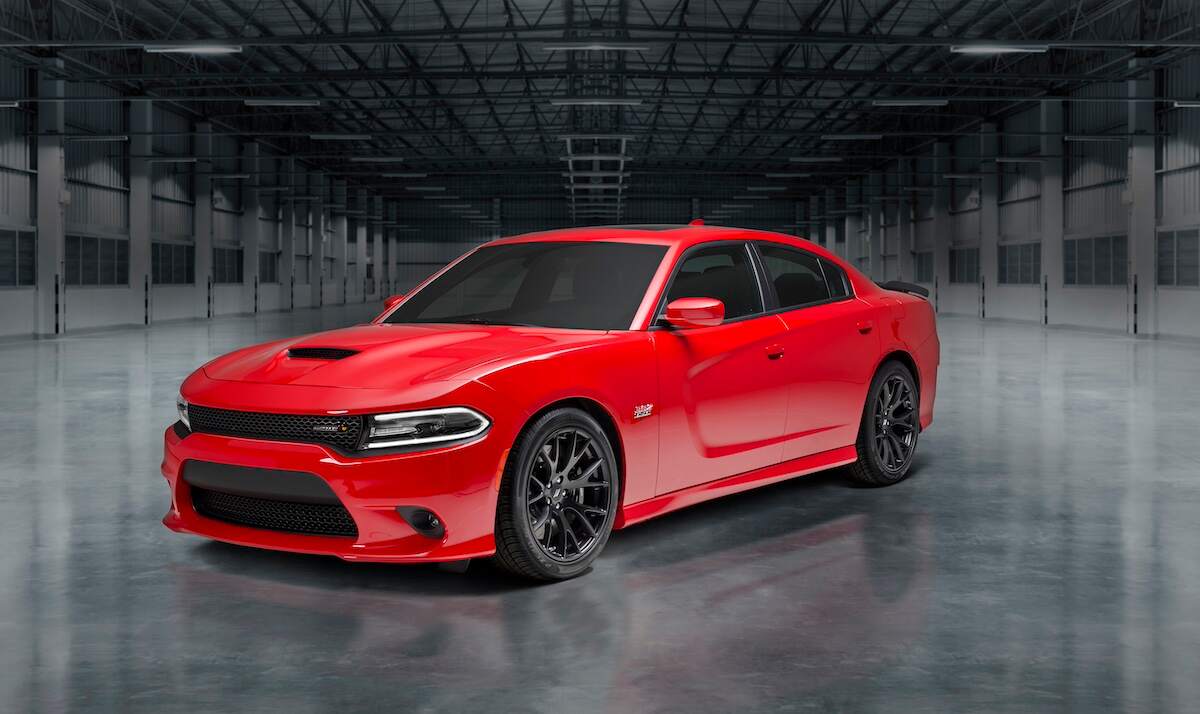
The 2018 Charger is a five-passenger four-door sedan. For the 2018 model year, Dodge offered this car in SXT, SXT Plus, GT, GT Plus, R/T, Daytona, R/T Scat Pack, Daytona 392, SRT 392, and SRT Hellcat trims. The V6 engine is standard in the SXT and GT, while the others feature increasingly powerful V8 engines, culminating in the 707-hp Hellcat. Additionally, rear-wheel drive is standard, but some used GT models will have all-wheel drive.
But like the Challenger, the more powerful Charger models are pricier, breaking a $25,000 budget.
Pros:
- Four doors provide easier access
- More spacious rear seats and trunk than the Challenger
- Impressive range of engine options and power outputs
- Better stability at high speeds than the Challenger
Cons:
- Limited outward visibility
- Lower resale value than the Challenger
- Lacks the Challenger’s retro vibe
2018 Dodge Challenger vs. 2018 Dodge Charger: Driving and performance
Comparing the available engines, you’ll see the Charger and Challenger are within a few tenths of a second of each other in acceleration. A 2018 Challenger can accelerate from 0 to 60 mph in 6.3 seconds with rear-wheel drive and an eight-speed automatic transmission. Meanwhile, the 2018 Charger takes 6.2 seconds.
Stepping up to the 5.7-liter V8, both muscle cars reach 60 mph in 5.1 seconds, while the 6.4-liter V8 takes 4.2 seconds in the Challenger and 4.1 seconds in the Charger. Hellcat models can hit 60 mph in 3.6 seconds for the Challenger and 3.4 seconds for the Charger.
Owner surveys submitted to J.D. Power show the 2018 Challenger and Charger earned similar “driving experience” scores of 89 and 86 out of 100, respectively. These “great” ratings reflect “owners’ evaluation of the vehicle’s design, performance, comfort, functionality, safety, and technology.”
2018 Dodge Challenger vs. 2018 Dodge Charger: Interior and tech
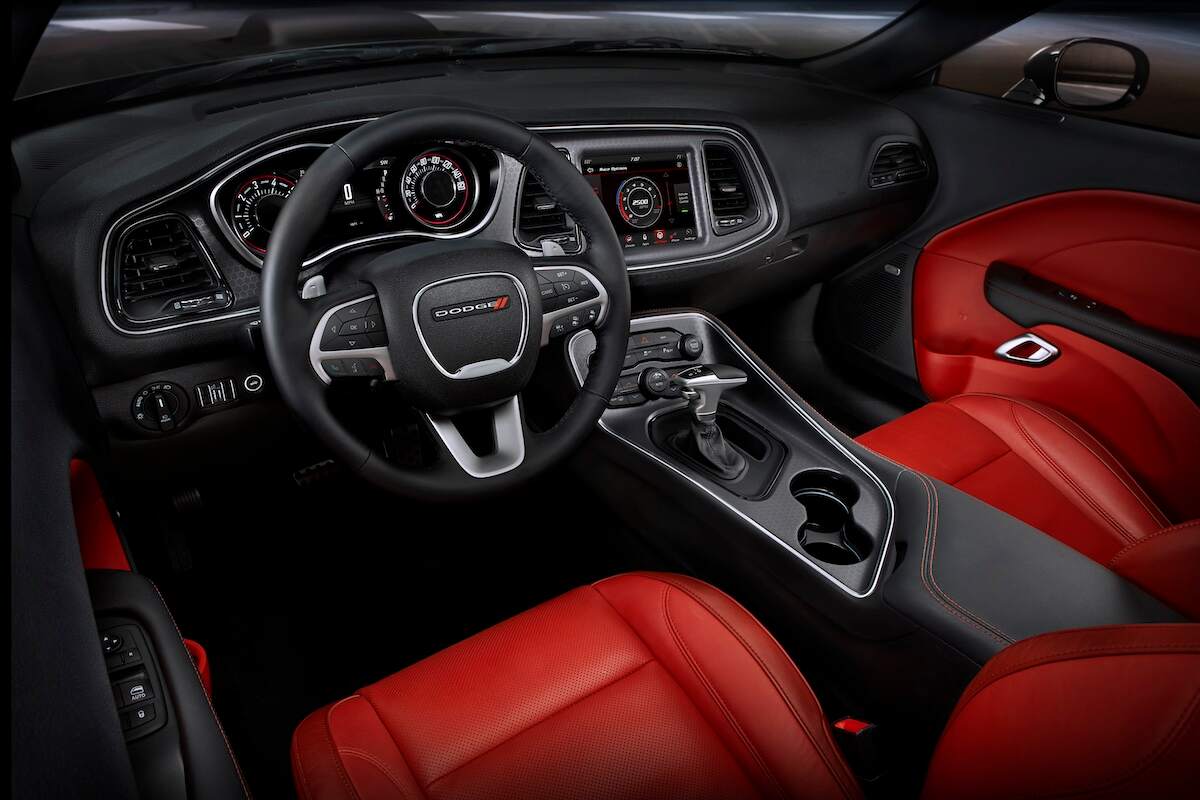
The 2018 Challenger and Charger have similar dashboards, steering wheels, and control layouts. For example, lower trims have a 7.0-inch touchscreen infotainment system running the brand’s UConnect system. You’ll find an upgraded 8.4-inch system in some models. It has a few extra features, such as an additional USB port and built-in navigation. Both have easy-to-use controls.
However, interior space is the most noticeable difference between the Challenger and the Charger. With two extra doors and a back seat that can fit three people comfortably, the Charger is more practical than the Challenger. Regardless, both can seat five, even if the Challenger’s back seat is cramped.
Which used Dodge muscle car is the right fit for you?
Ultimately, the decision between a used Challenger and a used Charger comes down to preferences and needs. If you seek a pure muscle car experience and don’t mind a two-door coupe design, the Challenger is hard to beat. On the other hand, if you require a four-door layout for easier access and more space, the Charger is more practical.
Either way, both Dodge muscle cars have their pros and cons. If expert ratings matter to you, know that J.D. Power scores the 2018 Challenger higher overall, giving it an 86 versus the Charger’s 82, mostly thanks to its superior resale value.
Regardless of which used car you choose, obtain a vehicle history report and have a trusted mechanic perform an inspection to uncover potential problems before purchasing. Also, prices may vary depending on trim level, mileage, overall condition, and location.

